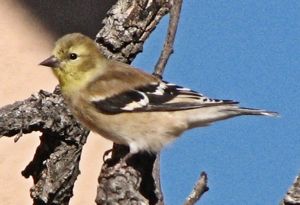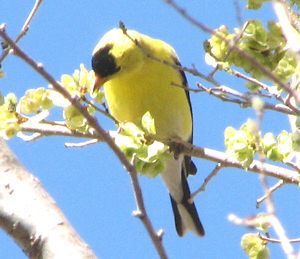Genus species:
Bucephala clangula
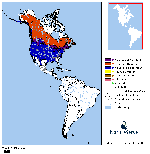
Enlarge Map
External Sites:
Cornell
USGS
Image Search
Male (below) has dark head with distinctive white patch between the bill and the eye.
Both have yellow eye.

Enlarge
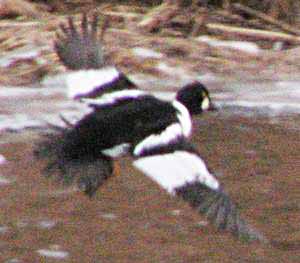
Mergus merganser
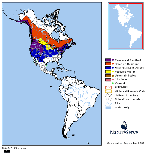
Enlarge Map
External Sites:
Cornell
USGS
Image Search
Male has dark head.
Female reddish-brown head.
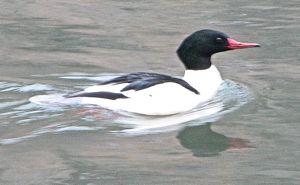
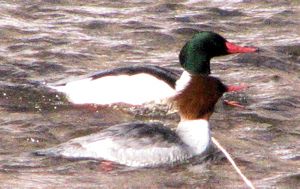
Haliaeetus leucocephalus
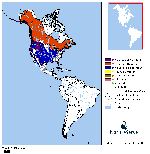
Enlarge Map
External Sites:
Cornell
USGS
Image Search
Juveniles have white in wings near body. Sometimes head brown and tail with brown band on trailing edge.
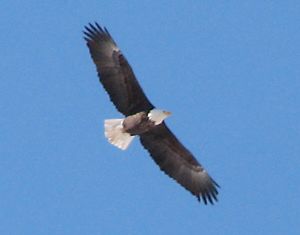
Myadestes townsendi
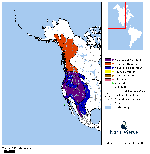
Enlarge Map
External Sites:
Cornell
USGS
Image Search
Gray all over with white on sides of tail.
Fluttery in flight, with cream-colored bands running the length of each wing on the underside.
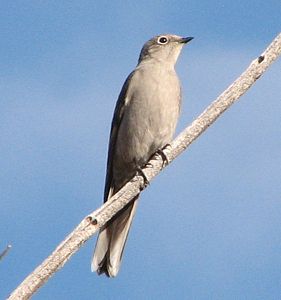
Zonotrichia leucophrys
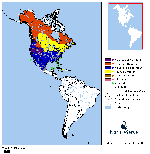
Enlarge Map
External Sites:
Cornell
USGS
Image Search
Juvenile (Lower Photo): Head stripes brown and gray.
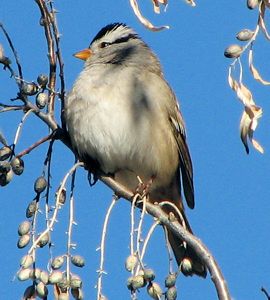
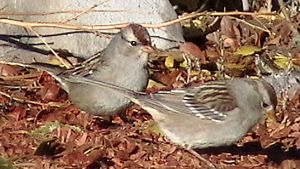
Junco hyemalis
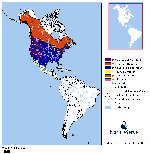
Enlarge Map
External Sites:
Cornell
USGS
Image Search
Almost always in flocks of 10-20 individuals. Identifiable by a very "dry" sounding "tck-tck" and by white showing on the sides of the tail, especially in flight.
Do a an Image Search (at left) to get an idea of the great variation in the plumage of this species.
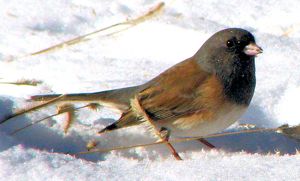
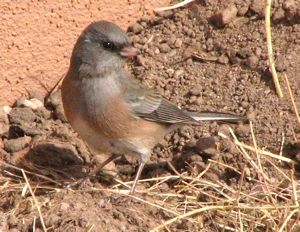
Carduelis tristis
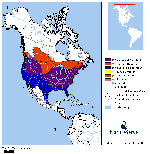
Enlarge Map
External Sites:
Cornell
USGS
Image Search
Male (Lower Photo)
